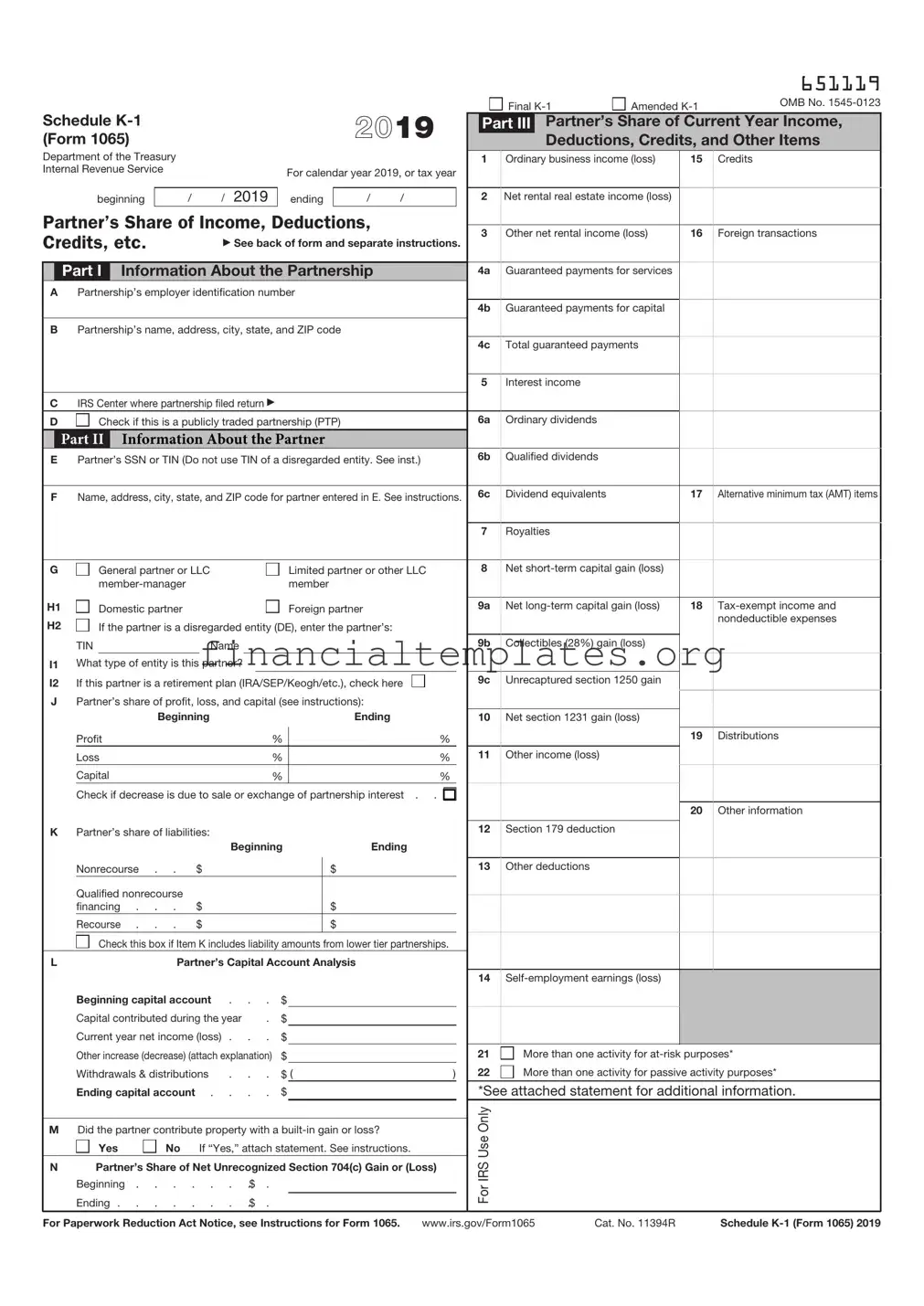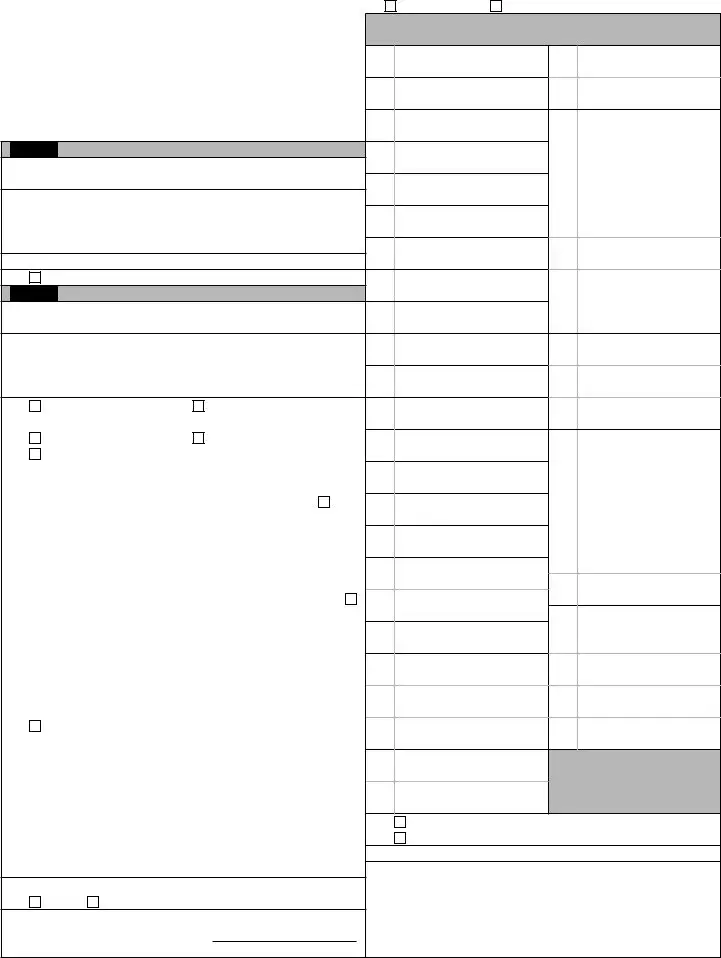The IRS Form 1040 is akin to the Schedule K-1 1065, as both are crucial for reporting individual income tax. While the Form 1040 is the standard federal income tax form for individuals, detailing income, deductions, and credits to determine their tax liability, the Schedule K-1 1065 form provides each partner of a partnership with their share of the business's income, losses, deductions, and credits to be reported on their personal Form 1040. This direct link in reporting personal share from business operations ties these two forms closely together.
Similarly, the IRS Form 1120S, used by S corporations, parallels the Schedule K-1 1065. Both forms facilitate the pass-through of income, losses, deductions, and credits from the entity to the individual taxpayers. However, the Form 1120S serves this role for S corporations and their shareholders, while the Schedule K-1 1065 is for partnerships and their partners. Each shareholder of an S corporation receives a Schedule K-1 (Form 1120S) reporting their share of the corporation's financial activity, akin to how partners receive their financial information.
The IRS Form 1065, U.S. Return of Partnership Income, is directly connected to the Schedule K-1 1065. Form 1065 is used by partnerships to report the income, gains, losses, deductions, credits, etc., of the business. From this form, the information is then distributed to the partners via Schedule K-1 1065, detailing each partner's share of the business’s financial activity for the year. This partnership form sets the foundation for the individual reporting provided by the Schedule K-1 1065.
The IRS Schedule K-1 1041 form, used by estates and trusts, bears similarity to the Schedule K-1 1065 in its purpose to pass through entity information to individual beneficiaries or trustees for their tax filings. Just as the Schedule K-1 1065 provides each partner with their share of income and losses from the partnership, the Schedule K-1 1041 serves beneficiaries of estates and trusts by detailing their portion of income, deductions, and credits to report on their personal tax returns.
IRS Form 8865 (Return of U.S. Persons With Respect to Certain Foreign Partnerships) shares functions similar to the Schedule K-1 1065, as it deals with the reporting requirements for U.S. persons who have an interest in a foreign partnership. The form includes a Schedule K-1 that reports the partner’s share of income, deductions, and credits, akin to the domestic partnership scenario, underscoring the global applicability of the K-1 reporting mechanism.
The IRS Form 8283 (Noncash Charitable Contributions) parallels the purpose of Schedule K-1 1065 in itemizing specific types of deductions. While Schedule K-1 1065 includes deductions for partners within a partnership, Form 8283 is used by individual taxpayers to report information on noncash contributions over a certain value. Both forms complement the taxpayer's main tax filing by providing additional detail on specific financial activities.
IRS Form 8858 (Information Return of U.S. Persons With Respect To Foreign Disregarded Entities) is in line with the concepts of the Schedule K-1 1065, providing disclosure of financial details for Americans with interests in foreign entities disregarded as separate from the owner for tax purposes. While the Form 8858 focuses on international transparency, the Schedule K-1 1065 ensures domestic transparency of partnership dealings to the IRS, with both enhancing fair tax administration.
Form 5471 (Information Return of U.S. Persons With Respect to Certain Foreign Corporations) shares similarities with Schedule K-1 1065, since they both involve international reporting by U.S. taxpayers. Form 5471 is used by certain U.S. citizens and residents who are officers, directors, or shareholders in certain foreign corporations, mirroring the K-1’s role in informing the IRS about international partnerships via the Form 8865 Schedule K-1, albeit focused on corporations.
The Schedule E (Form 1040), used to report income from rental real estate, royalties, partnerships, S corporations, estates, trusts, and residual interests in REMICs, shares connectivity with the Schedule K-1 1065. Partnerships’ income and loss reported on Schedule K-1 1065 often make their way to the individual's Schedule E, showcasing the flow-through nature of partnership earnings and their impact on the individual partner's tax obligations.
Lastly, IRS Form 7202, Credits for Sick Leave and Family Leave for Certain Self-Employed Individuals, although more focused on specific credits rather than overall income reporting, parallels the Schedule K-1 1065 in providing a mechanism for individuals to claim due benefits on their tax returns. It complements personal tax filings by offering targeted financial relief, similar to how Schedule K-1 1065 reports personal shares of broader financial activities from partnerships.

